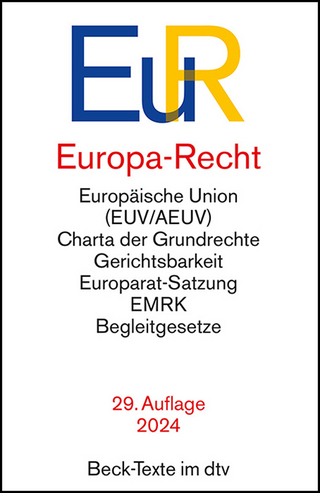
Tax Planning and Compliance for Tax–Exempt Organizations
John Wiley & Sons Ltd (Verlag)
978-0-470-90344-5 (ISBN)
- Titel erscheint in neuer Auflage
- Artikel merken
An essential, timesaving guide for accountants, lawyers, nonprofit executives and directors, consultants, and volunteers This book is an indispensable guide to navigating the complex maze of nonprofit tax rules and regulations. A clear and fully cited description of the requirements for the various categories of tax-exempt entities from public charities, private foundations, civic associations, business leagues, and social clubs to title-holding companies and governmental entities can be found. Practical guidance on potential for income tax on revenue-producing enterprises along with explanations of many exceptions to taxability is provided. Issues raised by Internet activity, advertising, publishing, providing services, and much more are explained. This useful guide covers the many significant issues facing nonprofit organizations, including compensation and possible private inurement, affiliation, separations and mergers, donor disclosures, lobbying and electioneering, and employment taxes.
* Offers a supplemental, annual update to keep subscribers current on relevant changes in IRS forms, requirements, and related tax procedures * Includes easy-to-use checklists highlighting such critical concerns as tax-exempt eligibility, reporting to the IRS, and comprehensive tax compliance issues * Features a variety of sample documents for private foundations, including penalty abatement requests and sharing space agreements * Provides helpful practice aids, such as a comparison of the differences between public and private charities, charts reflecting lobbying limits for different types of entities, and listings of rulings and cases that illustrate permissible activity for each type of organizations compared to impermissible activity Filled with practical tips and suggestions for handling such critical situations as preparing for and surviving an IRS examination, Tax Planning and Compliance for Tax-Exempt Organizations, Fifth Edition provides guidance for the significant issues facing nonprofit organizations.
Jody Blazek is a partner in Blazek & Vetterling, a CPA firm focusing on tax and financial planning for exempt organizations and the individuals who create, fund, and work with them. She is the author of six books in the Wiley Nonprofit Series and served on the Panel on the Nonprofit Sector's Transparency and Financial Accountability Work Group. She is former chair and a member of Form 1023 and 990 Revision Task Forces for the American Institute of Certified Public Accountants (AICPA). Amanda Adams is a partner in Blazek & Vetterling. She has coauthored (with Jody Blazek) Revised Form 990: A Line-by-Line Preparation Guide (Wiley). She is an associate member of the AICPA's Exempt Organizations Tax Technical Resource Panel. She has a wealth of knowledge about the impact of partnerships, hedge funds, and other alternative investments owned by nonprofits, private foundations, and supporting organizations.
List of Exhibits xiii Preface xvii About the Authors xxiii Acknowledgments xxv PART I QUALIFICATIONS OF TAX-EXEMPT ORGANIZATIONS 1 CHAPTER 1 Distinguishing Characteristics of Tax-Exempt Organizations 3 1.1 Differences between Exempt and Nonexempt Organizations 10 1.2 Nomenclature 13 1.3 Ownership and Control 13 1.4 Role of the Internal Revenue Service 14 1.5 Suitability as an Exempt Organization 15 1.6 Start-Up Tax and Financial Considerations 18 1.7 Choosing the Best Form of Organization 22 CHAPTER 2 Qualifying Under IRC 501(c)(3) 27 2.1 Organizational Test 29 2.2 Operational Test 35 CHAPTER 3 Religious Organizations 59 3.1 Types of Religious Organizations 59 3.2 Churches 64 3.3 Religious Orders 72 3.4 Religious and Apostolic Associations 72 CHAPTER 4 Charitable Organizations 75 4.1 Relief of the Poor 77 4.2 Promotion of Social Welfare 79 4.3 Lessening the Burdens of Government 88 4.4 Advancement of Religion 90 4.5 Advancement of Education and Science 90 4.6 Promotion of Health 91 4.7 Cooperative Hospital Service Organizations 110 CHAPTER 5 Educational, Scientific, and Literary Purposes and Prevention of Cruelty to Children and Animals 111 5.1 Educational Purposes 111 5.2 Literary Purposes 126 5.3 Scientific Purposes 127 5.4 Testing for Public Safety 132 5.5 Fostering National or International Amateur Sports Competition (But Only If No Part of Its Activities Involves the Provision of Athletic Facilities or Equipment) 133 5.6 Prevention of Cruelty to Children or Animals 134 CHAPTER 6 Civic Leagues and Local Associations of Employees: 501(c)(4) 135 6.1 Comparison of (c)(3) and (c)(4) Organizations 137 6.2 Qualifying and Nonqualifying Civic Organizations 141 6.3 Local Associations of Employees 143 6.4 Neighborhood and Homeowner s Associations 145 6.5 Disclosures of Nondeductibility 148 CHAPTER 7 Labor, Agricultural, and Horticultural Organizations: 501(c)(5) 157 7.1 Labor Unions 158 7.2 Agricultural Groups 163 7.3 Horticultural Groups 166 7.4 Disclosures of Nondeductibility 166 CHAPTER 8 Business Leagues: 501(c)(6) 169 8.1 Basic Characteristics 170 8.2 Meaning of "Common Business Interest" 170 8.3 Line of Business 172 8.4 Rendering Services for Members 174 8.5 Sources of Revenue 180 8.6 Membership Categories 180 8.7 Member Inurement 182 8.8 Chambers of Commerce and Boards of Trade 183 8.9 Comparison to 501(c)(5) 183 8.10 Recognition of Exempt Status 184 8.11 Formation of a Related Charitable Organization 185 8.12 Disclosures for Lobbying and Nondeductibility 186 CHAPTER 9 Social Clubs: 501(c)(7) 189 9.1 Organizational Requirements and Characteristics 190 9.2 Member Inurement Prohibited 193 9.3 Membership Requirements 194 9.4 Revenue Tests 196 9.5 Unrelated Business Income Tax 198 9.6 Filing and Disclosure Requirements 203 CHAPTER 10 Instrumentalities of Government and Title-Holding Corporations 205 10.1 501(c)(1) Instrumentalities of the United States 205 10.2 Governmental Units 206 10.3 Qualifying for 501(c)(3) Status 210 10.4 501(c)(2) Title-Holding Corporations 220 10.5 501(c)(25) Title-Holding Corporations 225 CHAPTER 11 Public Charities 227 11.1 Distinctions between Public and Private Charities 228 11.2 "Inherently Public Activity" and Broad Public Support: 509(a)(1) 232 11.3 Community Foundations 243 11.4 Service-Providing Organizations: 509(a)(2) 250 11.5 Difference between 509(a)(1) and 509(a)(2) 253 11.6 Supporting Organizations: 509(a)(3) 260 11.7 Testing for Public Safety: 509(a)(4) 271 PART II STANDARDS FOR PRIVATE FOUNDATIONS 273 CHAPTER 12 Private Foundations General Concepts 275 12.1 Why Private Foundations Are Special 275 12.2 Special Rules Pertaining to Private Foundations 278 12.3 Application of Taxes to Certain Nonexempt Trusts 285 12.4 Termination of Private Foundation Status 286 CHAPTER 13 Excise Tax Based on Investment Income: IRC 4940 311 13.1 Formula for Taxable Income 312 13.2 Capital Gains 319 13.3 Ponzi Scheme Losses 324 13.4 Deductions from Gross Investment Income 325 13.5 Tax-Planning Ideas 330 13.6 Foreign Foundations 334 13.7 Timely Payment of Excise Tax 336 13.8 Exempt Operating Foundations 337 CHAPTER 14 Self-Dealing: IRC 4941 339 14.1 Definition of Self-Dealing 340 14.2 Sale, Exchange, or Lease of Property 343 14.3 Loans 350 14.4 Compensation 352 14.5 Transactions That Benefit Disqualified Persons 363 14.6 Payments to Government Officials 369 14.7 Sharing Space, People, and Expenses 370 14.8 Indirect Deals 374 14.9 Property Held by Fiduciaries 375 14.10 Issues Once Self-Dealing Occurs 379 CHAPTER 15 Minimum Distribution Requirements: IRC 4942 385 15.1 Assets Used to Calculate Minimum Investment Return 386 15.2 Measuring Fair Market Value 393 15.3 Distributable Amount 398 15.4 Qualifying Distributions 401 15.5 Private Operating Foundations 413 15.6 Satisfying the Distribution Test 422 CHAPTER 16 Excess Business Holdings and Jeopardizing Investments: IRC 4943 and 4944 427 16.1 Excess Business Holdings 427 16.2 Jeopardizing Investments 435 16.3 Program-Related Investments 440 16.4 Penalty Taxes 444 CHAPTER 17 Taxable Expenditures: IRC 4945 449 17.1 Lobbying 451 17.2 Voter Registration Drives 456 17.3 Grants to Individuals 457 17.4 Grants to Public Charities 470 17.5 Grants to Foreign Organizations 482 17.6 Expenditure Responsibility Grants 487 17.7 Noncharitable Expenditures 500 17.8 Excise Taxes Payable 501 PART III OBTAINING AND MAINTAINING TAX-EXEMPT STATUS 531 CHAPTER 18 IRS Filings, Procedures, and Policies 533 18.1 IRS Determination Process 535 18.2 Annual Filing of Forms 990 543 18.3 Reporting Organizational Changes to the IRS 553 18.4 Weathering an IRS Examination 559 18.5 When Organization Loses Its Tax-Exempt Status 564 CHAPTER 19 Maintaining Exempt Status 565 19.1 Checklists 565 CHAPTER 20 Private Inurement and Intermediate Sanctions 587 20.1 Defining Inurement 589 20.2 Salaries and Other Compensation 591 20.3 Finding Salary Statistics 593 20.4 Housing and Meals 597 20.5 Purchase, Lease, or Sale of Property or Services 598 20.6 Loans and Guarantees 600 20.7 For-Profit to Nonprofit and Vice Versa 601 20.8 Services Rendered for Individuals 602 20.9 Joint Ventures 604 20.10 Intermediate Sanctions 605 CHAPTER 21 Unrelated Business Income 621 21.1 IRS Scrutiny of Unrelated Business Income 623 21.2 History of the Unrelated Business Income Tax 624 21.3 Consequences of Receiving UBI 625 21.4 Definition of Trade or Business 627 21.5 What Is Unrelated Business Income? 629 21.6 "Regularly Carried On" 630 21.7 "Substantially Related" 632 21.8 Unrelated Activities 637 21.9 The Exceptions 655 21.10 Income Modifications 662 21.11 Calculating and Minimizing Taxable Income 672 21.12 Debt-Financed Property 676 21.13 Museums 682 21.14 Travel Tours 684 21.15 Publishing 685 CHAPTER 22 Relationships with Other Organizations and Businesses 689 22.1 Creation of (c)(3) by (c)(4), (5), or (6) 690 22.2 Alliances with Investors 694 22.3 Creation of a For-Profit Corporate Subsidiary 700 22.4 Active Business Relationships 703 CHAPTER 23 Electioneering and Lobbying 707 23.1 Election Campaign Involvement 708 23.2 Voter Education versus Candidate Promotion 714 23.3 Tax on Political Expenditures 719 23.4 Lobbying Activity of 501(c)(3) Organizations 732 23.5 Permissible Amounts of Lobbying 739 23.6 Lobbying Limits for 501(c)(4), (5), (6), and Other Exempt Organizations 742 23.7 Advocacy and Nonpartisan Analysis 743 CHAPTER 24 Deductibility and Disclosures 747 24.1 Overview of Deductibility 747 24.2 The Substantiation and Quid Pro Quo Rules 759 24.3 Valuing Donor Benefits 769 24.4 Unrelated Business Income Aspects of Fund-Raising 773 24.5 State and Local Regulations 774 CHAPTER 25 Employment Taxes 777 25.1 Distinctions Between Employees and Independent Contractors 778 25.2 Ministers 786 25.3 Reporting Requirements 790 CHAPTER 26 Mergers, Bankruptcies, and Terminations 795 26.1 Mergers and Other Combinations 795 26.2 Bankruptcy 800 26.3 Terminations 803 Table of Cases 805 Table of IRS Revenue Rulings 817 Table of IRS Revenue Procedures 823 Index 825
| Reihe/Serie | Wiley Nonprofit Authority |
|---|---|
| Verlagsort | Chichester |
| Sprache | englisch |
| Maße | 186 x 261 mm |
| Gewicht | 1512 g |
| Themenwelt | Recht / Steuern ► EU / Internationales Recht |
| Recht / Steuern ► Steuern / Steuerrecht | |
| Wirtschaft ► Betriebswirtschaft / Management | |
| ISBN-10 | 0-470-90344-9 / 0470903449 |
| ISBN-13 | 978-0-470-90344-5 / 9780470903445 |
| Zustand | Neuware |
| Haben Sie eine Frage zum Produkt? |
aus dem Bereich



